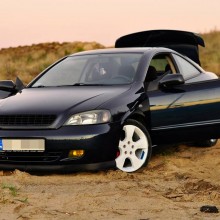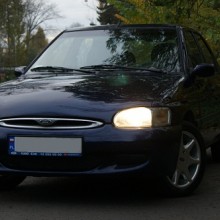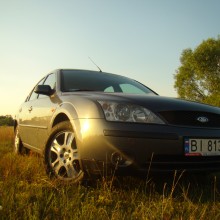Political Science
Blogi » opublikowano: 2024-03-16, zamieścił: lumenreins
What are the effects of superpower intervention on conflict and cooperation in Middle East politics? (Hint: U.S. and Palestinian- Israeli conflict, use it as an example).
The United States has played a great role in encouraging, facilitating, and attributing the end of conflict between Palestine and Israel. The success of the Israel military in the war against Palestine was affiliated by the financial support, which was received from the United States. The victory and dominion over the Arabs in the Middle East strengthened Israel politically, but created conflict between the peace activists and the settlers, who intended to claim the land of ancient Israel. The superpower countries, steered by the United States, invested in long-term solutions for Israel, providing them with financial assistance to enable the country to foster democracy and economic growth.
The fostering for peace between Israel and Palestine resulted in political stability, establishing Israel as a parliamentary democratic country. However, the foreign invasion, especially in the economic and trading sector, was highly opposed by the Arabs. The major conflict resisted by the invading countries was on abolition of Jewish government that the Palestine resisted. These efforts opened an opportunity for communication between Palestine and United States for peace promotion. The intervention of the United State during Palestine-Israel war created a base for the United States to establish the U.S. Middle East Policy that facilitated the delivery of sophisticated weapons to Israel, thus raising the economy of the United States and military assistance (Cleveland & Bunton, 2018).
The end of the Gulf War that was affiliated by boundary conflicts, along the Gulf region, marked the impact of United States invention in the conflict between Palestine and Israel through the provision of financial and food supply during the war, as a result of Soviet Union collapse. The support, offered by superpower countries, left the Middle East countries with huge debts, leading to the invasion of their resources, such as oil. This resulted in an economic crisis that was characterized by a decrease in oil production and an increase in oil prices, which affected the economy of Arab countries.
References
Anderson, B. S. (2016). Upheaval: Islamism, invasion, and rebellion from the 1990s into the 21st century. A history of the modern Middle East: Rulers, rebels, and rogues. Stanford: Stanford University Press.
Cleveland, W. L., & Bunton, M. (2018). A history of the modern Middle East (4th ed.). Boulder, CO: Routledge.
What was the impact(s) of the Arab-Israeli conflict on the domestic politics of the Arab states between 1948- 1980? (Discuss at least two Arab states).
The existed conflict between the Arabs and Israel was on Jewish leadership and Islamic leadership, which deferred in beliefs, economic and political perspectives. The conflict affiliated broad peacetime challenges that affected nation’s building. The Jewish leaders had established government structure, guided by communal organizations of the Israel nation institution. From the conflict within the Arab countries, Israel received a large number of immigrants, which led to a tremendous increase in Israel population, posing to various economic, cultural, and social challenges for the state.
At the end of the conflict, the Palestine Arabs, who had migrated to Israel, remained within the border of Israel. The Arabs remaining in Israel were awarded citizenship, though they were regarded as a potential fifth column. The state designed the structure that prevented Palestine in Israel prom, developing cohesive representative organization and was required to carry special identity cards and a travel permit, as they travel within the state. The Israel Arabs were alienated by discrimination in employment and wage rates, which intensified the conflict within the state. Israel-Palestine conflict affiliated political rivalry among the two countries, which resulted to freezing the settlement expansion of some regions in Israel, occupied by the Palestine.
The acceleration of the conflict between Iran and Israel creates fear of the emerging war in the Middle East, thus calling for re-escalation from superpower countries, like Britain, Russia, and France. Israel attacked Syria, occupying the Golan Heights in Southern Syria, which affiliated Iranian forces to fight back the Israel military. The conflict exists in trials to end the Jewish state which considers as a political and economic threat that threatens the future of Israel state (Cleveland & Bunton, 2018). The conflict affiliated Israel to seek for support in terms of weapon and finance from superpowers, which threatened resources in Arab countries, thus intensifying the war.
References
Anderson, B. S. (2016). Upheaval: Islamism, invasion, and rebellion from the 1990s into the 21st century. A history of the modern Middle East: Rulers, rebels, and rogues. Stanford: Stanford University Press.
Cleveland, W. L., & Bunton, M. (2018). A history of the modern Middle East (4th ed.). Boulder, CO: Routledge.
Write an about two of the 'three Iraq wars': - The Iran-Iraq War - The Gulf War, 1991 Discuss the nature of the conflicts, the key 'causes' and some of the consequences.
The Iran-Iraq War
The conflict occurred along the Iran-Iraq shared border of the two Arab countries in the 20th century. The modern Iraq state is at geographical disadvantage, along the Persian Gulf due to navigation problems. During the fight between the two, Iraq negotiated or applied force at times to seek access via Kuwait Island during the attack by the Iranians. The division among the two countries was affiliated by the discharge that is released along with the Persian Gulf during navigation. The major cause of conflict between the two Arab states was the invasion of Iran by Iraq over the conflict of oil resources, as well as the boundaries in 1980 under Saddam Hussein’s presidency. Territory dispute concerned the waterway that formed the border of the two states. The Algiers agreement attempted to solve the conflict in 1975, but the efforts were terminated by the fall of shah and establishment of the Islamic Republic, which reignited conflict (Anderson, 2016). Weapon’s superiority also affiliated war between Iraq and Iran with Saddam, using poison weapons to fight Iranian armies. The war between the countries ended in July 1987 with intervention from UN secretary through the passing of Intervention 598 (Anderson, 2016).
The Gulf War 1991
The outbreak of the war was a result of United States invasion to the Persian Gulf in the claim of the aid they have provided for the region during the time of war. The United States had been providing financial aid and food relief to the Iranian in the aftermath of war. Iraq invaded Kuwait in 1991 in the claim of the huge debt that Iraq accumulated during Iran-Iraq War from Saudi Arabia, Kuwait, and the neighboring countries (Anderson, 2016). The attack was meant to alleviate economic crisis in the country, as Iraq experienced a decline in oil production and an increase in oil prices controlled by the debtors. The war resulted to enormous damage to the Kuwait and Iraq, as a result of invasion by superpowers. The Gulf War also helped Iraq to reduce the enormous debt the country had incurred during Iran-Iraq war. However, the attack was condemned by the UN secretary general who imposed a sanction in Iraq. The superpower countries led by the United State and Britain threatened to attack Iraq if it does not end the invasion. The war ended in March 1991 with intensive air-bombing from Operation Desert Storm.
References
Anderson, B. S. (2016). Upheaval: Islamism, invasion, and rebellion from the 1990s into the 21st century. A history of the modern Middle East: Rulers, rebels and rogues. Stanford: Stanford University Press.
Discuss some of the geographical factors that distinguish the Middle East and suggest how these may have shaped the history of the region. You may use 1-2 countries as examples to explain your point more clearly.
The geographical location also defines the economic activities of the Arab states and the political stability and conflicts among the countries. The rivers, seas, geographical nature, land shape, and environment enabled the countries to handle their positions in warfare. Their boundaries were the major forms of conflict among the Arabic countries, as well as the shared resources, like oil (Cleveland & Bunton, 2018). Land terrain and topography affected the flow of underground resources, like oil, with the areas of high attitude draining the oils for countries at the lower part of the State.
Middle East region is characterized by Fertile Crescent that is known as the arch of fertile agricultural zone, forming the civilization basis of Lebanon, Israel, Iraq, and Syria. For instance, a country like Iraq is located along the Persian Gulf characterized by lack of deep-water port. This was disadvantageous to the country, as big ships could not easily enter, thus hindering trade and making it difficult to escape during the time of war. The Al-Arab waterway is another geographical feature that affiliated conflict between Iraq and Iran, as a result of discharge released from oil industry released to the Gulf (Anderson, 2016). The Kurds lived between the borders of Iran and Iraq, which further exacerbated the conflict. The Iraq holy cities of Najaf and Karbala were located at the area that is accessible by many Iranian Shi’s, as they came to study and Pilgrims.
The Middle East region is divided by mountains and deserts into six zones with geographical distinction; this influenced cultural development and maintenance through the historical region. The Nile River has facilitated economic growth of the region, as it is the major transportation means for the traders. Minerals and oil around the region are important historical factors for economic growth. The extensive desert, oases, and coastal regions, along the Persian Gulf, are more often suited for permanent settlement.
References
Anderson, B. S. (2016). Upheaval: Islamism, invasion, and rebellion from the 1990s into the 21st century. A history of the modern Middle East: Rulers, rebels, and rogues. Stanford: Stanford University Press.
Cleveland, W. L., & Bunton, M. (2018). A history of the modern Middle East (4th ed.). Boulder, CO: Routledge.
What is Comparative Politics? How does it relate to Political Science in general and Comparative Government in particular? Provide a short essay on the logic behind studying Comparative Politics.
Comparative politics refers to a political science with the empirical approach on the basis of the comparative method. It is a study of domestic politics, political institutions and political conflicts among countries, which forms political philosophy of the ancient politics. Comparative politics provides a clear understanding of different political systems through identification of differences and similarities, providing an understanding of democracy and freedom and how they are associated with individual systems (Calvert, 1993). A comparative study is basically used for comparing and contrasting the political phenomenon of different countries, determining how people are governed in different regions.
Comparative politics include political experience study in different countries, which helps in making a comparison in the political aspects of the countries. Comparative politics is studied through the cross-sectional approach and the area studies approach. Comparative politics study includes political experts from several specific countries and geographical location across the world. The comparative government involves the study of general structure and diversity of government systems across the world, as presented by comparative politics. Comparative politics, therefore, helps to study and determine how different governments are managed and controlled across the world, as presented in the political systems of that country.
Comparative politics helps to determine the research paradigms and strategies of different political systems. The study has enabled scholars to provide political realities proven by social and natural sciences that determine a country’s governorship. The political research has enabled the provision of valid analysis of the cause of historical political events that have improved human existence. The study, however, does not focus on the internal meaning, motives, feelings, and emotions of individuals, but provides collective statistics of the society (Nweke & Orji, 2009). Comparative politics has also enabled a study of the relationship between political events, basically creating a political history of a specific region or country. The study is, therefore, essential in the analysis of political systems and diversity in government structures across the world.
As a writer, I pour my heart and soul into every word I craft, striving to evoke emotion, spark curiosity, and ignite imagination in my readers. With a passion for storytelling and a knack for weaving together compelling narratives, I invite you to explore my world through the pages of my blog on my website https://perfectessaysonline.com/synopsis-writing-services
(0)
(0)
(0)
(0)
(0)
Tagi:
political science
Daj znać znajomym
Losowe Auta
-


BMW e36 CABRIOPojemność 1.8 Moc: 115 Rodzaj paliwa: Pb Zamieścił: Wasik95 -


OPEL B!Pojemność 1.8 Moc: 116 Rodzaj paliwa: Pb+LPG Zamieścił: pawelGM -


EscortMK7Pojemność 1.6 Moc: 90 Rodzaj paliwa: Pb Zamieścił: EscortMK7 -

-
Ford MondeoPojemność 2.0 Moc: 145 Rodzaj paliwa: Pb+LPG Zamieścił: Patryk34
Losowe Galerie
-

Oklejanie samochodów - www.zmianakoloruauta.pl
Zdjęć: 24
Oklejanie samochodów www.zmianakoloruauta.pl -

Citroen c3 2010
Zdjęć: 2
Cytrynka -

Polonez Caro
Zdjęć: 4
Moje auto ;p -

Volkswagen Golf II
Zdjęć: 1
Moje autko :) -
Zlot TurboKillers 2011
Zdjęć: 119
Zlot TurboKillers świętokrzyskie koło Grzybowa
Kalendarz Imprez
| < < | May 2025 | > > | ||||
| Pn | Wt | Śr | Czw | Pt | Sb | Nd |
| 01 | 02 | 03 | 04 | |||
| 05 | 06 | 07 | 08 | 09 | 10 | 11 |
| 12 | 13 | 14 | 15 | 16 | 17 | 18 |
| 19 | 20 | 21 | 22 | 23 | 24 | 25 |
| 26 | 27 | 28 | 29 | 30 | 31 | |
Shout Box
14:30:59 Yuriy
:
14:57:56 Kolorysta sklep lakierniczy
:
06:27:26 krishanlakhiwal
:
23:13:30 filmiarz
:
13:36:52 geleziessportas
:
05:51:11 Kane01
:
12:13:04 coinflip2
:
13:29:03 ScottishKiltTailor
:
13:29:11 ScottishKiltTailor
:
13:29:17 ScottishKiltTailor
:
13:29:26 ScottishKiltTailor
:
10:39:00 4kbluray4u
:
11:31:19 theleatherstreet
:
12:43:27 Red redproduce
:
07:14:34 kitchensgadget
:
07:46:19 racquetwar
:
13:26:45 luthervillepersonal
:
13:27:48 luthervillepersonal
:
07:16:33 Razofficial site
:
08:42:00 noragreen
:
Odznacz aby wyłączyć automatyczne
przewijanie okienka. Może
to być przydatne gdy próbujesz
odczytać starsze wiadomości a
automatycznie przewijające się
okienko utrudnia Ci to.
przewijanie okienka. Może
to być przydatne gdy próbujesz
odczytać starsze wiadomości a
automatycznie przewijające się
okienko utrudnia Ci to.
Zaloguj się aby pisać w shoutboxie,
zarejestruj się jeśli nie masz konta.




Komentarze